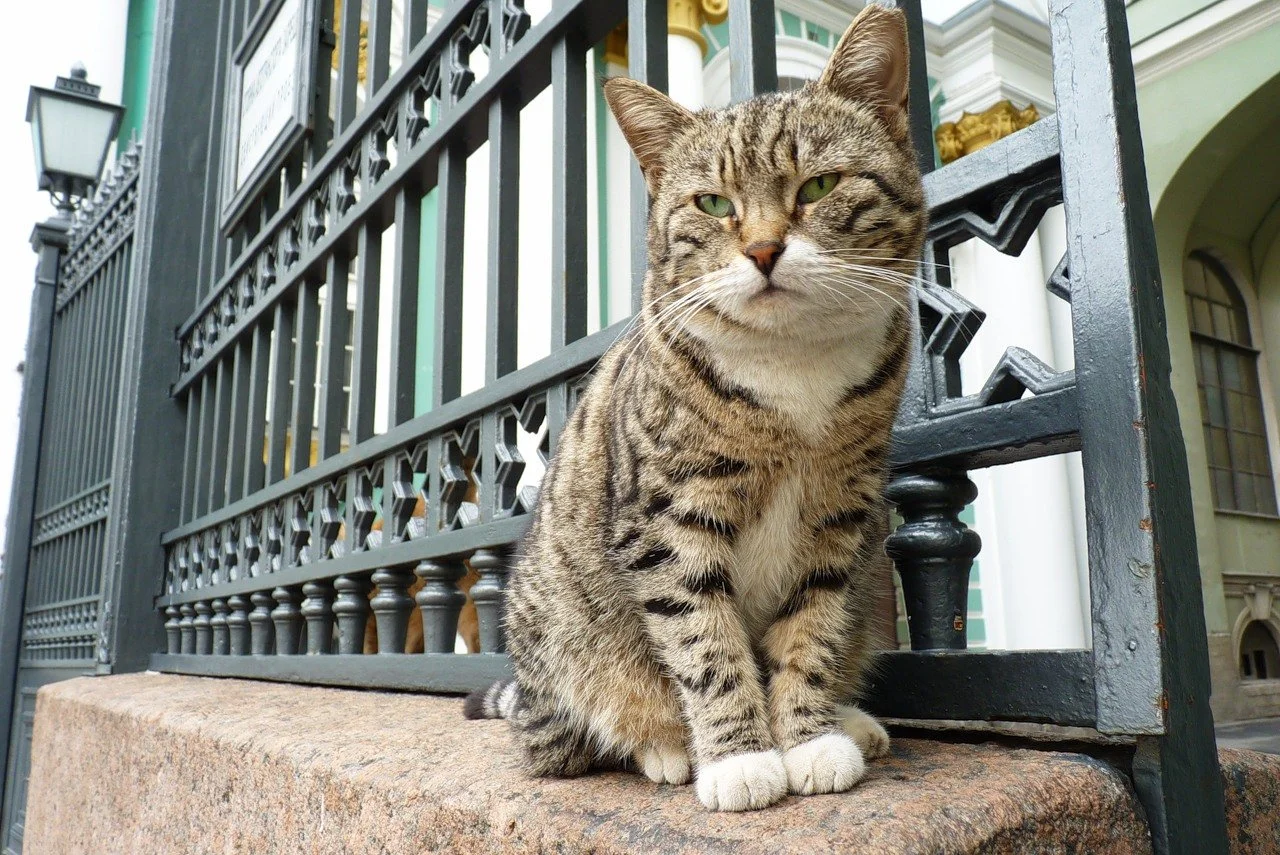Guardians of the Gallery: The Feline Night Watch
The Cats of the Hermitage Museum in St. Petersburg, Russia.
Throughout the history of museum-keeping, preservation has often required creative forms of protection. One of the more enduring, and perhaps least discussed, strategies involves the presence of cats. Long before the rise of modern pest-control systems, institutions charged with safeguarding art, textiles, manuscripts, and wooden artifacts relied on a living form of defense. A resident cat could prevent infestations that threatened irreplaceable collections, acting as a deterrent far more effective—and less destructive—than chemicals or traps.
This practice is not merely anecdotal. In some of the world’s oldest museums, cats became part of the institution’s daily rhythm. At the State Hermitage Museum in St. Petersburg, felines have guarded storerooms since the eighteenth century, introduced under Empress Elizabeth to protect valuable holdings from rodents. The tradition continues to this day, with dozens of cats living on-site, cared for by staff and veterinary personnel. Their presence is both functional and symbolic, representing continuity across centuries of stewardship.
A similar phenomenon can be observed in other major cultural sites, such as the Forbidden City in Beijing, where carefully managed cat colonies help preserve wooden architecture and historical artifacts from damage. These animals are maintained through humane programs that recognize their ecological role within museum environments. The Philbrook Museum of Art in Tulsa has even extended this logic to its grounds, formally recognizing its “Garden Cats” as part of the museum community.
Hermitage Museum cats lounge around in the basement, off-duty.
The use of cats within museums may appear quaint to modern sensibilities, yet it reveals something fundamental about how institutions adapt to material challenges. Pest control is not simply a technical issue; it intersects with curatorial ethics, conservation science, and environmental responsibility. The cat, in this context, becomes a participant in preservation—an organic link between human care and natural balance.
Hermitage Museum cat on watch duty.
Over time, these feline residents often acquire an identity of their own. They are named, remembered, and occasionally memorialized in institutional lore. Within the corridors of great museums, their presence endures as a reminder that the act of preservation depends not only on technology or expertise, but on living relationships—between people, objects, and, in this case, the vigilant guardians that often earn their keep unseen after closing hours.



